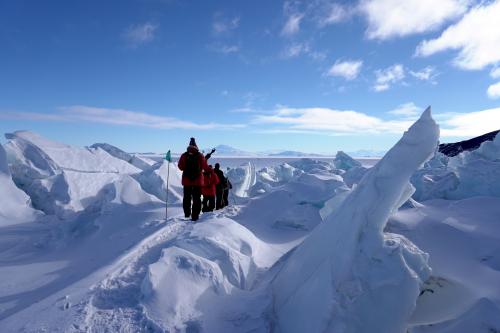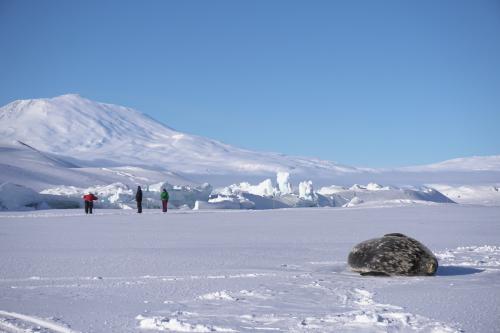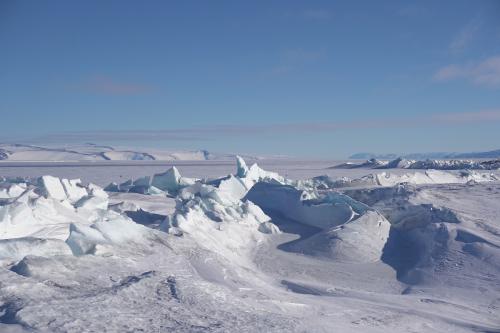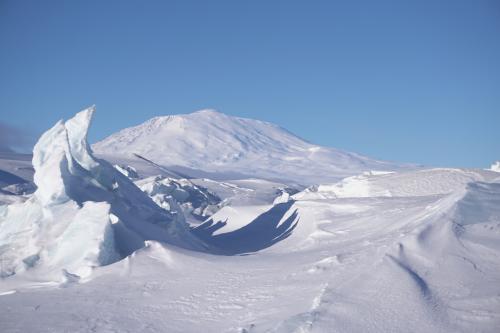
At the southernmost tip of Ross Island, Pram Point on the Hut Point peninsula annually witnesses a dramatic interaction between sea ice and land - the pressure ridges. Strong and persistent winds from the polar plateau to the South, coupled with the relentless northward push of the glacial Ross Ice Shelf force the thin sea ice into the bottom end of Ross Island. The outcome is stunning: a broken landscape of grayish-blue, first forming waves, then ridges, and eventually, open fissures filled with curling waves and standing columns.

Earlier this week, I hitched a ride with an evening tour of the pressure ridges located only a 10 minute van ride away. The safe hiking route through the feature is well marked by mountaineers' flags and it's wise to stay on the path: the presence of several dozen Weddell seals resting in the evening sunlight is a dead giveaway that the ice nearby is very thin in places. For that reason, our group is accompanied by Lilly and Laura, two experienced mountaineers volunteering their time to ensure that no mishaps occur. Their vigilance is apparent and yet our guides allow us the physical space to explore individually.

Wandering through peaks and crevasses and around sky-blue pools of draining brine on a bluebird evening in late spring, I am in a maze of rough-cut glass. The path twists and winds around towers and caves and then opens onto broad avenues channeling light from the low-angle sun. With our group spreading out to take photos of seals and ice arches, I find a few moments of solitude and silence, a rare occurrence in my average day here. Tucked out of the breeze and standing out of earshot of the others, the only sounds I hear are the click of my camera shutter, the crunch of the dry snow underfoot, and the periodic crack of the living ice. If I stop moving altogether, there is no noise at all and my brain starts to fill that space with a slight ringing. A few minutes later it's a comfort hearing the approaching footsteps of Laura, our guide, who politely tells me that it's time to head back to the van. The forces at work here are large, and I am very small.



Comments